Do you have a question about the Texas Instruments TI-83 and is the answer not in the manual?
Basic calculator skills introduction for TI-83 users.
Instructions for powering the TI-83 calculator on and off.
Overview of the TI-83 calculator's keyboard layout and functions.
Explains the caret key for general exponentiation on TI-83.
Demonstrates using the negative button for reciprocals on TI-83.
Setting calculator mode for degrees or radians for trig functions.
Step-by-step guide to graphing an equation using the TI-83.
Configuring table settings like start value and step on the TI-83.
Adjusting the TI-83 viewing window for a square aspect ratio.
Step-by-step guide to drawing a scatter diagram using the TI-83.
Finding extrema and monotonic intervals of functions on the TI-83.
Analyzing a specific piecewise function using the TI-83.
Calculating composite function values using the TI-83.
Step-by-step guide for quadratic curve fitting on the TI-83.
Guide to fitting power functions to data using the TI-83.
Fitting a cubic function to data using the TI-83.
Adding and subtracting complex numbers on the TI-83.
Evaluating powers like 2^1.4 using the TI-83.
Fitting an exponential model to data using the TI-83.
Practical conversion of angle measurements on the TI-83.
Calculating approximate values for cos, tan, etc., on the TI-83.
Step-by-step guide for sinusoidal regression on the TI-83.
Calculating arcsin values on the TI-83.
Converting polar points (r, θ) to rectangular (x, y) on TI-83.
Converting rectangular points (x, y) to polar (r, θ) on TI-83.
Step-by-step guide to graphing polar equations on the TI-83.
Guide to graphing parametric curves on the TI-83.
Detailed steps for solving linear systems via matrices on the TI-83.
Calculating the determinant of a 2x2 matrix using the TI-83.
Applying determinants and Cramer's rule to solve linear systems on TI-83.
Step-by-step guide for adding and subtracting matrices on the TI-83.
Step-by-step guide to graph linear inequalities on the TI-83.
Generating sequence terms and graphing them on the TI-83.
Calculating binomial coefficients like C(65, 15) on the TI-83.
Calculating permutations, P(n, k), on the TI-83.
Step-by-step guide to finding f'(x) numerically on the TI-83.
Calculating definite integrals to find area under a curve on TI-83.
Evaluating algebraic expressions with stored variables on the TI-83.
Basic calculator skills introduction for TI-83 users.
Instructions for powering the TI-83 calculator on and off.
Overview of the TI-83 calculator's keyboard layout and functions.
Explains the caret key for general exponentiation on TI-83.
Demonstrates using the negative button for reciprocals on TI-83.
Setting calculator mode for degrees or radians for trig functions.
Step-by-step guide to graphing an equation using the TI-83.
Configuring table settings like start value and step on the TI-83.
Adjusting the TI-83 viewing window for a square aspect ratio.
Step-by-step guide to drawing a scatter diagram using the TI-83.
Finding extrema and monotonic intervals of functions on the TI-83.
Analyzing a specific piecewise function using the TI-83.
Calculating composite function values using the TI-83.
Step-by-step guide for quadratic curve fitting on the TI-83.
Guide to fitting power functions to data using the TI-83.
Fitting a cubic function to data using the TI-83.
Adding and subtracting complex numbers on the TI-83.
Evaluating powers like 2^1.4 using the TI-83.
Fitting an exponential model to data using the TI-83.
Practical conversion of angle measurements on the TI-83.
Calculating approximate values for cos, tan, etc., on the TI-83.
Step-by-step guide for sinusoidal regression on the TI-83.
Calculating arcsin values on the TI-83.
Converting polar points (r, θ) to rectangular (x, y) on TI-83.
Converting rectangular points (x, y) to polar (r, θ) on TI-83.
Step-by-step guide to graphing polar equations on the TI-83.
Guide to graphing parametric curves on the TI-83.
Detailed steps for solving linear systems via matrices on the TI-83.
Calculating the determinant of a 2x2 matrix using the TI-83.
Applying determinants and Cramer's rule to solve linear systems on TI-83.
Step-by-step guide for adding and subtracting matrices on the TI-83.
Step-by-step guide to graph linear inequalities on the TI-83.
Generating sequence terms and graphing them on the TI-83.
Calculating binomial coefficients like C(65, 15) on the TI-83.
Calculating permutations, P(n, k), on the TI-83.
Step-by-step guide to finding f'(x) numerically on the TI-83.
Calculating definite integrals to find area under a curve on TI-83.
Evaluating algebraic expressions with stored variables on the TI-83.
| Programming | TI-BASIC |
|---|---|
| Processor | Zilog Z80, 6 MHz |
| Weight | 7.4 oz (210 g) |
| Display | 96x64 pixels, monochrome LCD |
| Power Source | 4 AAA batteries, 1 CR1616 or CR1620 for backup |
| Memory | 32 KB RAM |
| Connectivity | 2.5mm I/O port for linking with other TI calculators |
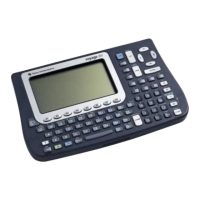
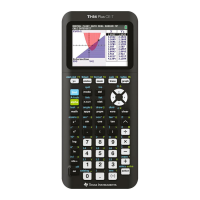
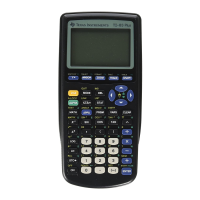
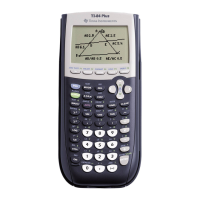
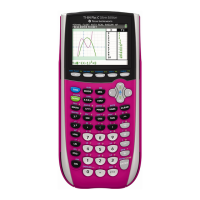
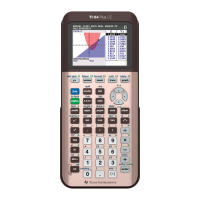
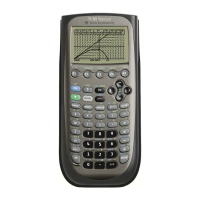
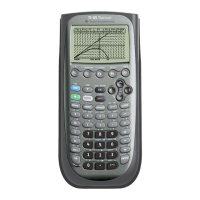



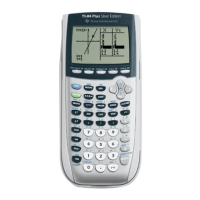
